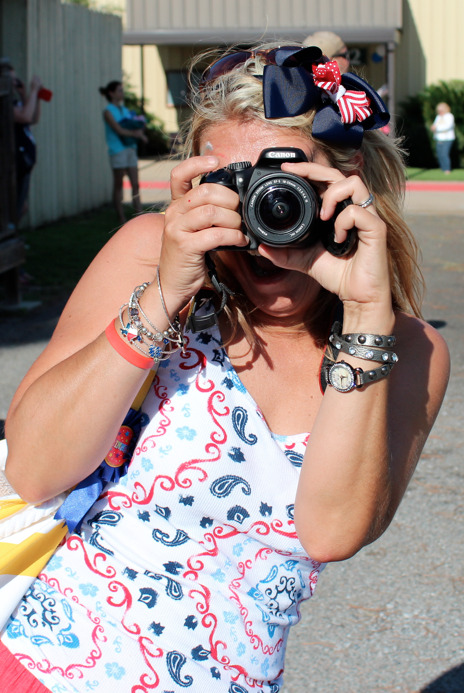Smile! – Doing Visual Ethnography

“Say, Cheese!” “Sonríe!” “Lächeln!” “Tabasamu!” “улыбаться!” These are just a few of the countries I have traveled to and taken pictures of wonderful people I have met. We all have pictures of things we have seen, places we have visited, and people we have met. Who would of “thunk” that there was such an enormous practice that uses photos, videos and the like to do research on people. I speak of the practice known as visual ethnographic. While reading Doing Visual Ethnography by Sarah Pink I was utterly “shuttered” into a new focus of pictures, video and their usage.
Traditionally ethnography has simply been looked at as no more than just collecting data over a period of time as one spends watching, asking questions, and observing people in an effort to collect data on that people. It was merely a particular method or a set of methods employed to achieve the desired research. I rather agree with Pink however, as she describes ethnography as more of a process of creating and representing knowledge about a society or culture or even individuals that are based on one’s own experiences. With this understanding we are able to offer versions of our own experiences of reality that remain loyal to the context in which that knowledge was produced. (Pink p. 18) with that said, we must understand the limitations to our own version of reality. No ethnographic work, regardless of its breath or depth, can fully and accurately represent any people. However, when one incorporates the use of visual images the representation of the people being studied moves toward a greater level of clarity and precision, which is what any researcher desires.
There is a bit of ambiguity however, as to what is classified as a useful ethnographic photo or video. Who is to say that your picture of your great-grandmother sitting on her front porch in the early 1900s is simply just a picture of a loved one who has since passed on, or, is in fact, a useful video ethnographic document and therefore to be classified as one? This is where the pinning down of this art, or process, known as visual ethnography, is most difficult. There are no clear-cut categories that allow us to determine which photo has more “ethnographicness” (Pink’s own word (p.19) ) potential over another one. The classification and interpreting of photographic material then lies in a very ambiguous place. Academic interpretation, analysis, and categorization of such photographs and video remain at the mercy and subjectivity of their viewers. Therefore the academic meanings given to visual images are “arbitrary and are constructed in relation to particular methodological and theoretical agendas.” (Pink P. 94)
Ah, yes, agendas. When approaching any form of research we unfortunately come with an agenda. There seems to be no difference when we are documenting people with the written text or through a lens. All photographs and video will be interpreted in different ways by different people in different times through out the research project. (Pink P. 95). It therefor behooves us that we make sure that our preconceived notions and our agendas do not get in the way of discovery as we engage the people. I appreciate that Pink understood this tendency of ours and addressed this in her statement saying: “researchers should not have fixed, preconceived expectations of what it will be possible to achieve by using visual research methods in a given situation.” (Pink P. 32)
Finally, there is the matter that Pink addresses with regards to ethics. As we study people around the world attempting to understand them better, we must come to the realization that the frame work in which, and through which, we want to understand them is indeed already bias and filtered through my American/western mind set. For truly the approach to ethnography will place us in ethical dilemmas. What higher ground will we rise to and desire to pull others up to? It cannot be simply that of the moral code of the West (though that code is rapidly heading south), nor can it be our own personal convictions that guide our way. Pink referred, or rather deferred, to the Anthropologist Dr. Nigel Rapport, professor of Anthropological and Philosophical studies at the university of St. Andrew, when searching for an answer to our ethical approach. Rapport falls on the side where the individual is of the highest importance. If anything is deemed as “hurting” the individual then we should not allow that practice to continue, “where an ethic of interpersonal tolerance is not managed.” (Pink P. 38) Rapport sites such things as Naziism, female circumcision, infanticide, and religious fundamentalism as those things that historically have hurt the individual. So, the question for us is where do we fall? What is that which grounds us to our ethical standards? Is it, as Rapport stated, the individual and their feelings or safety, or is it greater than that? The struggle we must all undertake, whether we are focusing on a people group through a lens, or through the power of the typed word, is that we must know where the Maker of all these people stands. Ultimately He has the highest ethical morality and the highest level of love for each one. For love covers a multitude of sins.
________________________
Pink, Sarah. Doing Visual Ethnography. London: Sage, 2001.
Leave a Reply
You must be logged in to post a comment.